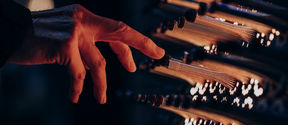Rewiring art education

‘We tend to think about art education as learning to draw and paint. But today it's also about educating the game-changing designers and coders who are increasingly needed in our digital world,’ says Mira Kallio-Tavin, Associate Professor of Art-based Research and Pedagogy at Aalto University.
'We also often presume that our kids all grow up as "digital natives" and easily learn about new technologies. But it's misleading to think this way, as kids need to be taught the skills they need for managing the many technology choices they will face in their lives,’ she says.
Getting it right
One of the places where children can learn these skills in a safe and creative environment is Käsityökoulu Robotti ('Art and Craft School Robotti'), an extra-curricular school founded in 2012 by Aalto University alumni Roi Ruuskanen and Tomi Dufva. The school follows a semester-based curriculum with a long-term pedagogical plan and objectives based on three core activities: building electronics, programming, and working with new digital technologies.
‘There are loads of programming and science schools around the moment—which is great—but Käsityökoulu Robotti is different in that we approach things from the art side,’ says Ruuskanen. ‘Our teachers are all art teachers by education, or they are media artists.
The school is based in the Children's Cultural Centre Aurora, an open-house art and theatre facility in the Finnish city of Espoo. In addition to offering after-school classes here, Käsityökoulu Robotti also runs its program in locations in both Helsinki and Turku. Most of the school's students are 7-12 years old, plus there are some groups for teenagers too.
Meeting of minds
Ruuskanen and Dufva met while studying art at Aalto University, where Dufva continues to work as a lecturer in art education. He completed his doctoral thesis in 2018.
‘I'm more the producer type and Tomi is more the artist type,’ says Ruuskanen. ‘Some years ago we had a couple of workshops here during festivals and events, gathering other interested art educators to see what we could do together. One thing led to another and we created Käsityökoulu Robotti.’
Ruuskanen himself is heavily influenced by 'maker culture': the do-it-yourself movement within electronics and hardware that gave birth to innovations like laser cutting and 3D printing.
‘When we build electronics, we try to use as many real components as possible, instead of ready-made kits. So we teach the kids how to solder, for example. We also like to use open-source software as much as possible.’
Bending and breaking
Käsityökoulu Robotti is big on the concept of 'circuit bending', where electronic devices are made or adapted by taking away or adding components to things like low-voltage toys or instruments.
‘Circuit bending is something we do quite a bit,’ says Ruuskanen. ‘Creative misuse, and doing things "wrong" leads to interesting places. The end result can be aesthetically pleasing, but it's really the creative process that's important.’
Some of the creations from the students include projection-mapped video sculptures, synthesizer drawings that can be played, and programmed interactive self-portraits.
‘We also have end-of-semester exhibitions where the students can show their work. This is another way we root ourselves in the tradition of art,’ says Ruuskanen.
More from this series

Making computer-generated images look just right
Machine learning imperfections in materials
Rewiring art education
Käsityökoulu Robotti is an extra-curricular school for kids that is as much about having fun bending circuits as about learning by breaking boundaries.
Quantum Garden uses sculpture to get the public to train AI
The sculpture gathers data sequences to help solve a quantum computing problem.
AI’s story won’t be complete without art
Aalto’s Kasperi Mäki-Reinikka wants art and technology to collide and make something new- Published:
- Updated:
Read more news

From space technology and shimmering wood to shapeshifting textiles – explore world-changing research in the brand new Marsio building
The Makers of the Impossible exhibition and the Designs for a Cooler Planet festival will kick off the autumn season at Marsio – Aalto University’s brand new, open-to-all campus venue.
Transforming interdisciplinary education: Sustainable Global Technologies (SGT) across four continents
The true impact of our actions often unfolds over time, as demonstrated by the students at the SGT FAIR’24 on May 22. Their work showcased how a single student challenge can drive significant change.
CEST researchers receive significant LUMI supercomputing resources
Read how two successful machine learning projects got support by a supercomputer